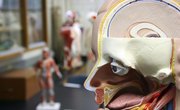People decide on a nursing career for many reasons and enroll in a stressful educational program to earn their cap and stripe. From human anatomy to assessment techniques, the information you must learn is overwhelming. You begin to feel like the only thing you are doing is studying for the next exam. The more you enjoy learning about a topic, the more you learn. Put the creative thinking cap on and turn study time into game time.
Hangman
Learning definitions can be a problem area for some people. Use the simple game of Hangman to teach definitions of complex medical terms. Choose the word or term and write all or part of the definition below the blanks. Play the game with 10 or 15 definitions. Once the student nurses learn the first set, move on to another set. You can also use medicines, diseases or equipment names for the game.
Build a body part
Select index cards of one color and size. Enlarge a diagram being studied and glue the cards onto the diagram. Cut the index cards apart. Label each card with an appropriate part of the diagram. Put the diagram together using only the words printed on the back. Once completed, turn over each card and keep it in place. Some of the results may be amusing when body parts are not where they belong. This can be done when memorizing the bones in the hand or the placement of internal organs.
Game Shows
Games based on television game shows work well to break up the monotony of studying and help make learning fun. For instance, "Who Wants to be a Millionaire" and "Jeopardy" are two games you can set up in the classroom or for a study group. Other game shows you can alter for use in studying facts are "Wheel of Fortune," "$10,000 Pyramid" and "Family Feud." Set up a medical version of "Minute to Win It" with games like Breakfast Scramble using diagrams from your books or Mega-Bubbles to blow bubbles through a path representing the circulatory or bronchial system.
Crossword Puzzles
Use crossword puzzles to teach the correct spelling of medical terms and more. Use the "across" clues for student nurses to learn various diseases. Teach symptoms and other information about the condition using the "down" clues. For instance, your first clue across may be "core body temperature drop" and the first clue down could be "The part of the brain that responds to No. 1, across." The answers would be hypothermia and hypothalamus.
Related Articles
References
Writer Bio
Julie Richards is a freelance writer from Ohio. She has been writing poetry and short stories for over 30 years, and published a variety of e-books and articles on gardening, small business and farming. She is currently enrolled at Kent State University completing her bachelor's degree in English.











